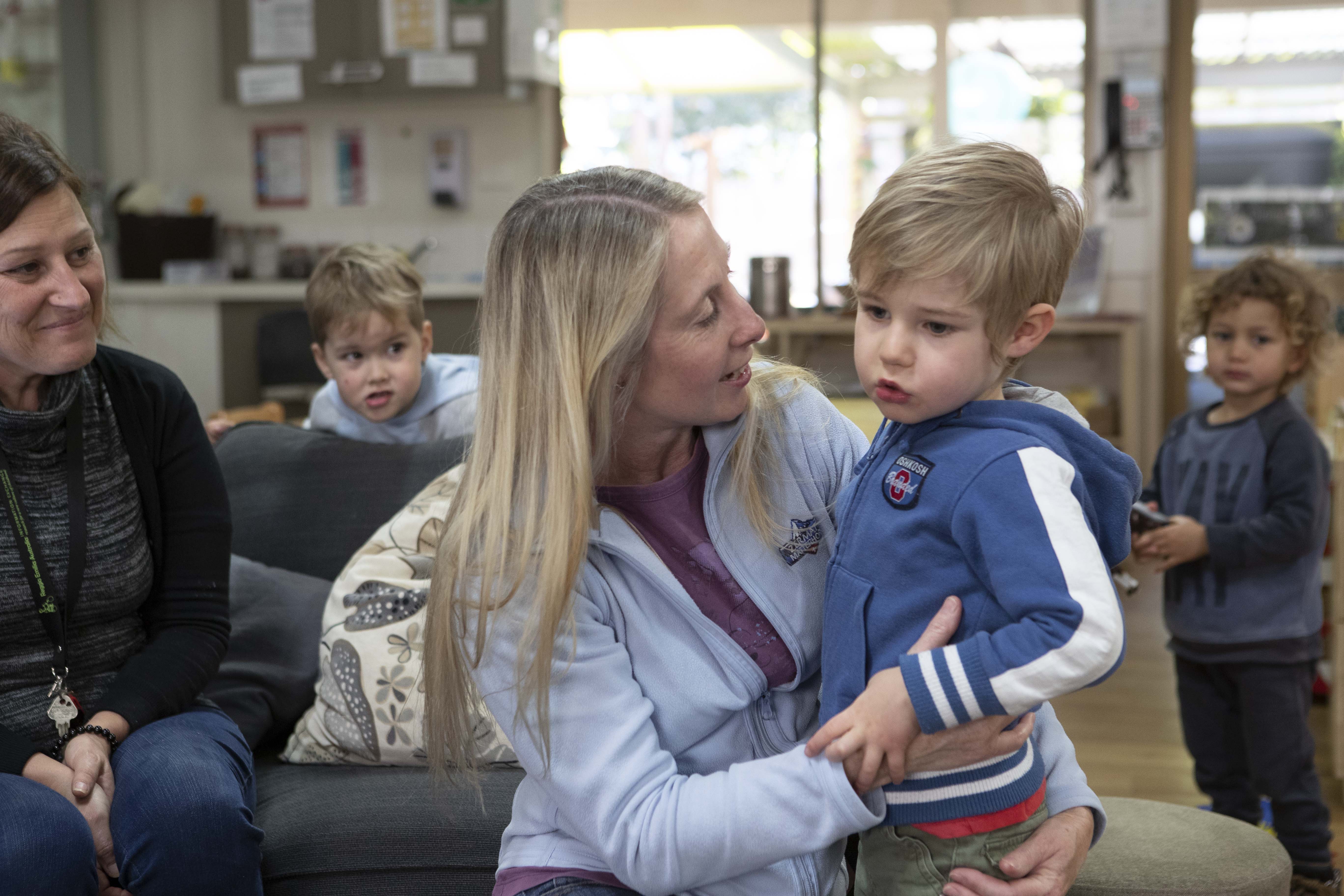On this page
Download this Fact Sheet:
Fact Sheet: Separation anxiety (184.5 KB, PDF)
What is separation anxiety?
Separation anxiety is a common and normal fear that some children experience, when they are away from their families.
A developmentally appropriate level of separation anxiety can be a sign of the close attachment between children and their families and tends to lessen with age. However, if the anxiety becomes excessive, it can interfere with the child’s daily functioning and learning, and they may be at risk of developing an anxiety disorder.
From around six months of age, many children begin to show anxiety when they’re away from close family members.
As they don’t yet have a separate sense of self, babies see family members as part of themselves and so they can feel that a part of them is missing when they’re separated. Babies may not understand that adults will come back after leaving them. Babies and young children may also feel anxious around unfamiliar people and in new settings.
This anxiety tends to reduce over time as a child’s familiarity with their early learning service or school increases. Older children may also develop a separate sense of self, so they’re better able to understand that their families will return.
What are the signs?
Children vary in their levels of emotional sensitivity. Some children worry while others are more carefree and don’t show anxiety when separating from family. Children also show their anxiety in different ways – some may be visibly upset or appear nervous, while others may have physical symptoms and changed behaviours. Common behaviours and symptoms include:
- crying
- clinginess and not letting go of a family member
- needing a favourite toy to settle
- shyness
- difficulty joining in social activities with other children
- headaches
- stomach aches and vomiting
- difficulties sleeping
- refusing to speak to family members or educators.
Educators may support children during separation by offering comfort and an alternate activity. Over time, most children learn to feel safe in their new surroundings and gradually experience less separation anxiety.
How can educators help children manage this anxiety?
By being emotionally present and available to children, you can help children through their emotions and needs.
It’s important to find a balance between being supportive and reassuring and allowing children to practise managing their own emotions. It also helps support resilience as a key protective factor of good mental health.
You can help children experiencing separation anxiety with a range of strategies.
Work with families
- Communicate regularly with the child’s family and check if there are any issues that may be increasing the child’s anxiety (for example, working through grief, divorce).
- Develop a clear morning routine with the child’s family. This can help the child feel safe and can predict when family members will leave and return (for example, sharing a special goodbye hug).
- Ask families to say “goodbye” to their child, let them know when they’ll be back and where they’ll pick them up.
- Reassure families that the child is being supported, and communicate which activities are used to help comfort the child and create a sense of belonging.
- Create a social story/photobook for the family and child to look at and talk about at home.
Build trust with the child
- Greet the child each morning or connect them to other staff who the child knows well.
- Be calm, warm, reassuring and friendly.
- Acknowledge their emotions and provide comfort.
- Help the child become engaged in an enjoyable activity once they enter the room.
- Increase the child’s feelings of safety and connectedness by suggesting they bring a familiar toy, comfort items like a special blanket or dummy or family photo from home.
When separation anxiety becomes more serious
By preschool and school age, children are less likely to experience separation anxiety or it’s intensity will reduce.
However, a small number of children experience a level of anxiety that interferes with their daily functioning and learning. When children become anxious more easily, more often and more intensely than other children, they may be diagnosed with an anxiety disorder, including separation anxiety disorder.
If you’re concerned about a child’s level of anxiety, note whether:
- their anxiety has continued over a period of time
- their anxiety stops them participating in activities at the early learning service or school or with peers
- their anxiety interferes with their ability to participate in activities
- the fears seem out of proportion to the issues in their life
- the child is not attending or refusing to attend the service or school.
If you think a child is showing more serious signs of anxiety, speak to their family about your concerns. You might suggest they talk to their GP, or they may need a referral to a mental health professional for an assessment.
It can be useful to prepare for these conversations with a colleague before meeting with the family. You can use the Be You BETLS Observation Tool to gather and document information and observations to help support these conversations.
Learn more about anxiety.
Be You Professional Learning
Learn more about signs of mental health issues in the Early Support domain.
Learn more about social and emotional learning (SEL) and teaching for resilience in the Learning Resilience domain.
-
External links
Raising Children Network – Separation anxiety / Anxiety and fears in children
-
Bibliography
Battaglia, M., Touchette, E., Garon-Carrier, G., Dionne, G., Côté, S., Vitaro, F., Tremblay, R., & Boivin, M. (2015). Distinct trajectories of separation anxiety in the preschool years: persistence at school entry and early‐life associated factors. Journal of Child Psychology and Psychiatry, 57(1), 39-46.
